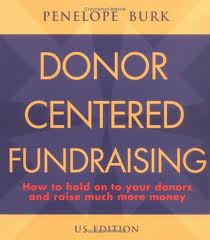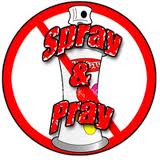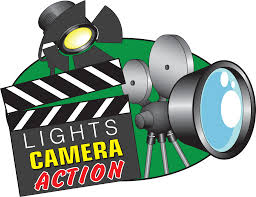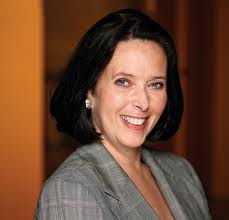 Welcome to O.D. Fridays at DonorDreams blog. Every Friday for the foreseeable future we will be looking at posts from John Greco’s blog called “johnponders ~ about life at work, mostly” and applying his organizational development messages to the non-profit community.
Welcome to O.D. Fridays at DonorDreams blog. Every Friday for the foreseeable future we will be looking at posts from John Greco’s blog called “johnponders ~ about life at work, mostly” and applying his organizational development messages to the non-profit community.
First let me start this O.D. Fridays post with an apology to DonorDreams blog readers.
For the last week, I’ve been in St. Louis with hundreds of Boys & Girls Clubs from the Midwest and Southwest regions. What an amazing conference with inspiring stories and talented board volunteers and staff members! Hats off to the national staff who planned and executed a flawless conference plan.
Unfortunately, I can’t say the same thing for me and this blog platform.
I didn’t post anything on Monday because my ride to St. Louis picked me up at 5:55 am, and I also missed the mark on Thursday because I needed to be in my exhibitor booth at 7:00 am.
Here are all of the things I’ve been trying to balance this week:
- Writing for the DonorDreams blog community
- Managing and staffing my exhibitor booth
- Organizing and facilitating a training track
- Networking
- Working with other clients back home who are under contract and in need of attention
For those of you who know me, I usually balance competing projects fairly well. So, why did this week turn out so messy? Why did I drop the ball and not blog on Monday and Thursday?
I think some of the answers to these questions can be found on John Greco’s July 23, 2013 johnponders post titled “Ink It“. In this post, John drills down on the following Chinese proverb:
“The faintest ink lasts longer than the best memory.”
Heading into this challenging week, I didn’t write anything down. I was operating with everything in my head.
I am not just talking about the power of task lists and calendars. This has everything to do with brain science and in some instances personality types.
Now let’s take a 180 degree turn and about-face with this idea.
If you buy into what John talks about in “Ink It,” then what are you doing to encourage your:
- staff to write things down?
- board volunteers to write things down?
- donors to write things down?
Again, we’re not necessarily talking about task lists and time management, which is how I started the post.
What if your board members were asked to write out their personal action plans for the upcoming year?
What if donors were asked to write out their personal stories about why they support your agency? What if you published those testimonials on your agency’s blog or Facebook page?
Would the result be a deeper sense of engagement?
Would board members be more likely to follow through on what they commit to doing? Would donors end up increasing their contributions?
I dunno . . . but if you buy into what John says about the act of writing something down, then these are questions every non-profit professional should be asking themselves.
Have you ever asked donors to share their story in writing? What was the result? How did you use it? What about engaging board members in writing out their commitments as part of a future focused action planning process centered around your strategic planning process?
Please use the comment box below to share your thoughts and experiences.
A side note of appreciation
Throughout the week at the Boys & Girls Club conference in St. Louis, I’ve been approached by countless numbers of people asking me about this blog.
Just last night, I was dragging myself off of the elevator on my way to another late night bedtime when a fellow passenger (who I’ve never met and don’t know), said “You’re that blogger! I missed your post this morning.”
I just want to take a moment to sincerely thank all of you who subscribe and read this blog. I very much appreciate your time, loyalty and complements.
It is easy for me to get into that “Fred the Baker” from Dunkin’ Donuts mindset of “It’s time to make the donuts.” However, this week reminds me that this blog and your daily work is all about mission-focus, your clients, and making this world a better place.
Thank you to those of you who re-inspired me.
I’m also glad that I’ve written all of this down in ink so that this inspiration won’t fade too quickly. 😉
Here’s to your health!
Erik Anderson
Founder & President, The Healthy Non-Profit LLC
www.thehealthynonprofit.com
erik@thehealthynonprofit.com
http://twitter.com/#!/eanderson847
http://www.facebook.com/eanderson847
http://www.linkedin.com/in/erikanderson847

 Every year, it seems like one of the charities I support is celebrating some kind of anniversary or milestone. Most of the time, it relates to the age of the organization, and it is typically a milestone like 25, 50, 75 or 100 years of existence. Sometimes it is a different kind of anniversary, where they’re celebrating a board member’s years of service or the age of something physical like a building. Regardless of the opportunity to celebrate, a fundraising solicitation is never far behind; however, anniversary celebrations can be so much more than just putting your hand out.
Every year, it seems like one of the charities I support is celebrating some kind of anniversary or milestone. Most of the time, it relates to the age of the organization, and it is typically a milestone like 25, 50, 75 or 100 years of existence. Sometimes it is a different kind of anniversary, where they’re celebrating a board member’s years of service or the age of something physical like a building. Regardless of the opportunity to celebrate, a fundraising solicitation is never far behind; however, anniversary celebrations can be so much more than just putting your hand out. A few weeks ago, I started getting email and snail-mail announcing the 100th anniversary of the
A few weeks ago, I started getting email and snail-mail announcing the 100th anniversary of the  For example . . .
For example . . . Sometimes I see things at just the right time and in the right place, and it results in me seeing something differently. Usually, when this happens it results in an AH-HA moment. This is exactly what happened to me yesterday when I opened an email from my friends at
Sometimes I see things at just the right time and in the right place, and it results in me seeing something differently. Usually, when this happens it results in an AH-HA moment. This is exactly what happened to me yesterday when I opened an email from my friends at  So, the title of today’s blog post had the word “AH-HA” in it, which implies that my friends at Non-Profit Humour inspired a light bulb of some sort.
So, the title of today’s blog post had the word “AH-HA” in it, which implies that my friends at Non-Profit Humour inspired a light bulb of some sort. Yes, yes, yes . . . I know what you’re thinking: “Our agency doesn’t have things like hotel rooms, flights and cups of coffee to give away like these for-profit corporations.” But are you sure about that? Because I’ve attended many charity auctions in my life.
Yes, yes, yes . . . I know what you’re thinking: “Our agency doesn’t have things like hotel rooms, flights and cups of coffee to give away like these for-profit corporations.” But are you sure about that? Because I’ve attended many charity auctions in my life. Last week I was out with a friend for a glass of wine after work. We hadn’t seen each other in a few months, and we were catching up on lost time. “How are you? How is the new job? How’s your wife? Kids? Grandkids?” You know the drill. It was during this exchange that he dropped the bomb: “So, how is your partner? Ya know … the only time I ever see him is when he is asking me for a donation.”
Last week I was out with a friend for a glass of wine after work. We hadn’t seen each other in a few months, and we were catching up on lost time. “How are you? How is the new job? How’s your wife? Kids? Grandkids?” You know the drill. It was during this exchange that he dropped the bomb: “So, how is your partner? Ya know … the only time I ever see him is when he is asking me for a donation.”
 These personal touches do not have to be all about your non-profit organization. I suggest that you train your volunteers to be less obvious. For example, both stewardship touches could be as simple as three minutes worth of messaging in the middle of a lunch meeting or after-work cocktail. It should feel organic and nature. It shouldn’t feel forced or contrived.
These personal touches do not have to be all about your non-profit organization. I suggest that you train your volunteers to be less obvious. For example, both stewardship touches could be as simple as three minutes worth of messaging in the middle of a lunch meeting or after-work cocktail. It should feel organic and nature. It shouldn’t feel forced or contrived. There are 9-keys to “inspiring and managing yours board for fundraising success”. In fact, the reality is that these 9-keys are the same nine things you need to do to “engage” anyone in anything. However, I believe that these nine concepts are not all equal. While all are important, I have come to realize that the most important and most difficult engagement tool was best summed up by the “Wizard of Oz’s” Tim Man in this
There are 9-keys to “inspiring and managing yours board for fundraising success”. In fact, the reality is that these 9-keys are the same nine things you need to do to “engage” anyone in anything. However, I believe that these nine concepts are not all equal. While all are important, I have come to realize that the most important and most difficult engagement tool was best summed up by the “Wizard of Oz’s” Tim Man in this  So, last week was an amazing week for my blog. It appears that I struck upon a topic of interest for the non-profit community when I focused on special events and how some agencies make poor decisions around return on investment (ROI) decisions and volunteer utilization. While I promised myself that I would end that discussion thread about zombies, I decided this morning over coffee to continue down “the yellow brick road” a little further by changing metaphors. It is Halloween season after all. LOL
So, last week was an amazing week for my blog. It appears that I struck upon a topic of interest for the non-profit community when I focused on special events and how some agencies make poor decisions around return on investment (ROI) decisions and volunteer utilization. While I promised myself that I would end that discussion thread about zombies, I decided this morning over coffee to continue down “the yellow brick road” a little further by changing metaphors. It is Halloween season after all. LOL The concept of “spray and pray” in resource development is simply sending out many appeals (aka shotgun effect), and then waiting for (aka hoping and praying) that enough donors respond so that you can make your goal. “Spray and pray” doesn’t just refer to direct mail. Back in the day, I used it in annual campaigns where I asked fundraising volunteers to identify five people from their social network, sit down with them in-person, and ask for a pledge or contribution. If your fundraising program is still loaded with “spray and pray” strategies, then you’re probably struggling because those days are long since over.
The concept of “spray and pray” in resource development is simply sending out many appeals (aka shotgun effect), and then waiting for (aka hoping and praying) that enough donors respond so that you can make your goal. “Spray and pray” doesn’t just refer to direct mail. Back in the day, I used it in annual campaigns where I asked fundraising volunteers to identify five people from their social network, sit down with them in-person, and ask for a pledge or contribution. If your fundraising program is still loaded with “spray and pray” strategies, then you’re probably struggling because those days are long since over. think millions of other donors) would be:
think millions of other donors) would be:
 Last year I wrote a post titled “
Last year I wrote a post titled “
 Episode #239 . . .
Episode #239 . . . 